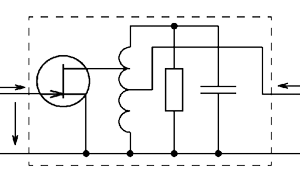Z-transform exponential approximation of one-dimensional functions: Theory and applications
DOI:
https://doi.org/10.3103/S0735272721040038Keywords:
z-transform, Prony method, exponential polynomials, selective radio electronic systems, reduction methods, time characteristics, mathematical operator modelsAbstract
A new method of interpolation/approximation of univariate functions using exponential polynomials, both complete and reduced, generally using complex polynomials, was suggested. The solution is based on the Z-transformation of one variable function, predetermined by a discrete set of equally spaced samples. For the first time, the problem was solved for dynamic systems with proper frequencies of any multiplicity. The method of transition from time functions to full, and shortened operator models of selective radioelectronic devices was represented. In addition, the transfer ratio, reduced by Z-transform, corresponds exactly to the basic approximation in the modified method of the truncated operator equations. Based on some examples including IFA of ninth order (with three poles, each of which having multiplicity factor three) on exposure to complex FM/PM input signal, the usage possibility of precise as well as shortened exponential and operator polynomials aimed to design radioelectronic systems which are sensitive to phase variation during the transition process, was proved.
References
- S. I. Evtianov, Chosen Articles. Moscow: Izdatelskiy dom MEI, 2013.
- L. A. Vainshtein, D. E. Vaiman, Frequency Sharing in Theory of Oscillation and Waves, [in Russian]. Moscow: Nauka, 1983.
- V. M. Bogachev, “Polynomial filters synthesis and their frequency & transient characteristics,” Vestn. MEI, no. 5, pp. 94–101, 2009, uri: https://www.elibrary.ru/item.asp?id=12955405.
- G. Lendaris, “The identification of linear systems,” AIEE Trans., vol. 81, no. 11, pp. 231–242, 1962.
- K. Khatwani, J. Bajwa, “Identification of linear time-invariant systems using exponential signals,” IEEE Trans. Autom. Control, vol. 20, no. 1, pp. 146–148, 1975, doi: https://doi.org/10.1109/TAC.1975.1100862.
- S. L. Marple, Digital Spectral Analysis: With Applications. Prentice Hall, 1987.
- G. Ammar, W. Dayawansa, C. Martin, “Exponential interpolation: theory and numerical algorithms,” Appl. Math. Comput., vol. 41, no. 3, pp. 189–232, 1991, doi: https://doi.org/10.1016/0096-3003(91)90025-I.
- G. Beylkin, L. Monzón, “On approximation of functions by exponential sums,” Appl. Comput. Harmon. Anal., vol. 19, no. 1, pp. 17–48, 2005, doi: https://doi.org/10.1016/j.acha.2005.01.003.
- R. Zhang, G. Plonka, “Optimal approximation with exponential sums by a maximum likelihood modification of Prony’s method,” Adv. Comput. Math., vol. 45, no. 3, pp. 1657–1687, 2019, doi: https://doi.org/10.1007/s10444-019-09692-y.
- V. Zakharchenko, I. Kovalenko, “Best approximation of the fractional semi-derivative operator by exponential series,” Mathematics, vol. 6, no. 1, p. 12, 2018, doi: https://doi.org/10.3390/math6010012.
- G. Plonka, K. Stampfer, I. Keller, “Reconstruction of stationary and non-stationary signals by the generalized Prony method,” Anal. Appl., vol. 17, no. 02, pp. 179–210, 2019, doi: https://doi.org/10.1142/S0219530518500240.
- N. S. Kochanov, Synthesis Basics of Linear Electric Circuits in Time Domain, [in Russian]. Moscow: Svyaz, 1967.
- V. M. Bogachev, M. V. Balashkov, “Integrated system of exponential approximation and its applications,” in 2018 Systems of Signal Synchronization, Generating and Processing in Telecommunications, SYNCHROINFO 2018, 2018, doi: https://doi.org/10.1109/SYNCHROINFO.2018.8457041.
- A. A. Kardashov, “Application of z-transformations tо exponential approximation of correlation and transfer functions,” Autom. Remote Control, vol. 29, no. 3, pp. 413–422, 1968, uri: http://mi.mathnet.ru/eng/at10519.<
- M. V. Balashkov, V. M. Bogachev, “Z-transform application for exponential approximation of time-functions,” in 2018 Systems of Signal Synchronization, Generating and Processing in Telecommunications, SYNCHROINFO 2018, 2018, doi: https://doi.org/10.1109/SYNCHROINFO.2018.8456979.
- P. Barone, E. Massaro, A. Polichetti, “The segmented Prony method for the analysis of non-stationary time series,” Astron. Astrophys., vol. 209, no. 1–2, pp. 435–444, 1989, uri: http://adsabs.harvard.edu/full/1989A%26A...209..435B.
- J. E. F. del Rı́o, T. K. Sarkar, “Comparison between the matrix pencil method and the Fourier transform technique for high-resolution spectral estimation,” Digit. Signal Process., vol. 6, no. 2, pp. 108–125, 1996, doi: https://doi.org/10.1006/dspr.1996.0011.
- K. D. Ikramov, “Matrix pencils: Theory, applications, and numerical methods,” J. Sov. Math., vol. 64, no. 2, pp. 783–853, 1993, doi: https://doi.org/10.1007/BF01098963.
- “Modification of the matrix pencil method using a combined evaluation of signal poles and their inverses,” Bull. South Ural State Univ. Ser. «Computational Math. Softw. Eng., vol. 6, no. 1, 2017, doi: https://doi.org/10.14529/cmse170102.
- M. V. Balashkov, V. M. Bogachev, “The singular method of exponential approximation with its applications,” in 2019 Systems of Signal Synchronization, Generating and Processing in Telecommunications, SYNCHROINFO 2019, 2019, doi: https://doi.org/10.1109/SYNCHROINFO.2019.8814274.
- P. Boito, Y. Eidelman, L. Gemignani, “A real QZ algorithm for structured companion pencils,” Calcolo, vol. 54, no. 4, pp. 1305–1338, 2017, doi: https://doi.org/10.1007/s10092-017-0231-6.
- D. A. Solomatin, V. M. Bogachev, M. V. Balashkov, “The transients in frequency selective systems at an impact of modulated radio pulse,” in 2018 Systems of Signal Synchronization, Generating and Processing in Telecommunications (SYNCHROINFO), 2018, pp. 1–9, doi: https://doi.org/10.1109/SYNCHROINFO.2018.8456981.
- I. Markovsky, Low Rank Approximation. London: Springer London, 2012, doi: https://doi.org/10.1007/978-1-4471-2227-2.
- I. D. Zolotarev, Y. E. Miller, Transient Processes in Oscillatory Systems and Circles, [in Russian]. Moscow: Radiotekhnika, 2010.
- G. A. Korn, T. M. Korn, Mathematical Handbook for Scientists and Engineers: Definitions, Theorems, and Formulas for Reference and Review. New York, NY: McGraw-Hill, 1961.


